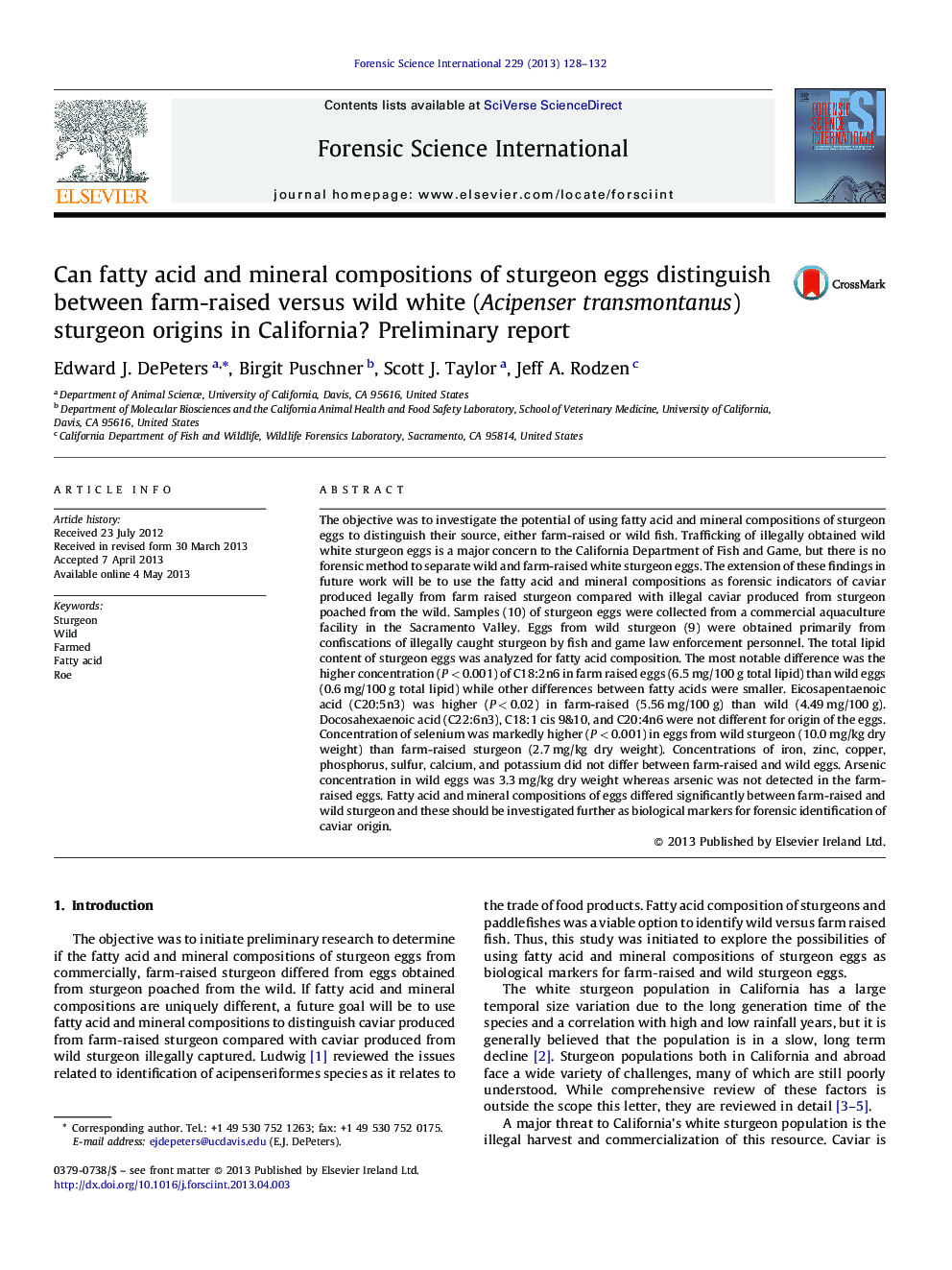| کد مقاله | کد نشریه | سال انتشار | مقاله انگلیسی | نسخه تمام متن |
|---|---|---|---|---|
| 95961 | 160450 | 2013 | 5 صفحه PDF | دانلود رایگان |

The objective was to investigate the potential of using fatty acid and mineral compositions of sturgeon eggs to distinguish their source, either farm-raised or wild fish. Trafficking of illegally obtained wild white sturgeon eggs is a major concern to the California Department of Fish and Game, but there is no forensic method to separate wild and farm-raised white sturgeon eggs. The extension of these findings in future work will be to use the fatty acid and mineral compositions as forensic indicators of caviar produced legally from farm raised sturgeon compared with illegal caviar produced from sturgeon poached from the wild. Samples (10) of sturgeon eggs were collected from a commercial aquaculture facility in the Sacramento Valley. Eggs from wild sturgeon (9) were obtained primarily from confiscations of illegally caught sturgeon by fish and game law enforcement personnel. The total lipid content of sturgeon eggs was analyzed for fatty acid composition. The most notable difference was the higher concentration (P < 0.001) of C18:2n6 in farm raised eggs (6.5 mg/100 g total lipid) than wild eggs (0.6 mg/100 g total lipid) while other differences between fatty acids were smaller. Eicosapentaenoic acid (C20:5n3) was higher (P < 0.02) in farm-raised (5.56 mg/100 g) than wild (4.49 mg/100 g). Docosahexaenoic acid (C22:6n3), C18:1 cis 9&10, and C20:4n6 were not different for origin of the eggs. Concentration of selenium was markedly higher (P < 0.001) in eggs from wild sturgeon (10.0 mg/kg dry weight) than farm-raised sturgeon (2.7 mg/kg dry weight). Concentrations of iron, zinc, copper, phosphorus, sulfur, calcium, and potassium did not differ between farm-raised and wild eggs. Arsenic concentration in wild eggs was 3.3 mg/kg dry weight whereas arsenic was not detected in the farm-raised eggs. Fatty acid and mineral compositions of eggs differed significantly between farm-raised and wild sturgeon and these should be investigated further as biological markers for forensic identification of caviar origin.
Journal: Forensic Science International - Volume 229, Issues 1–3, 10 June 2013, Pages 128–132